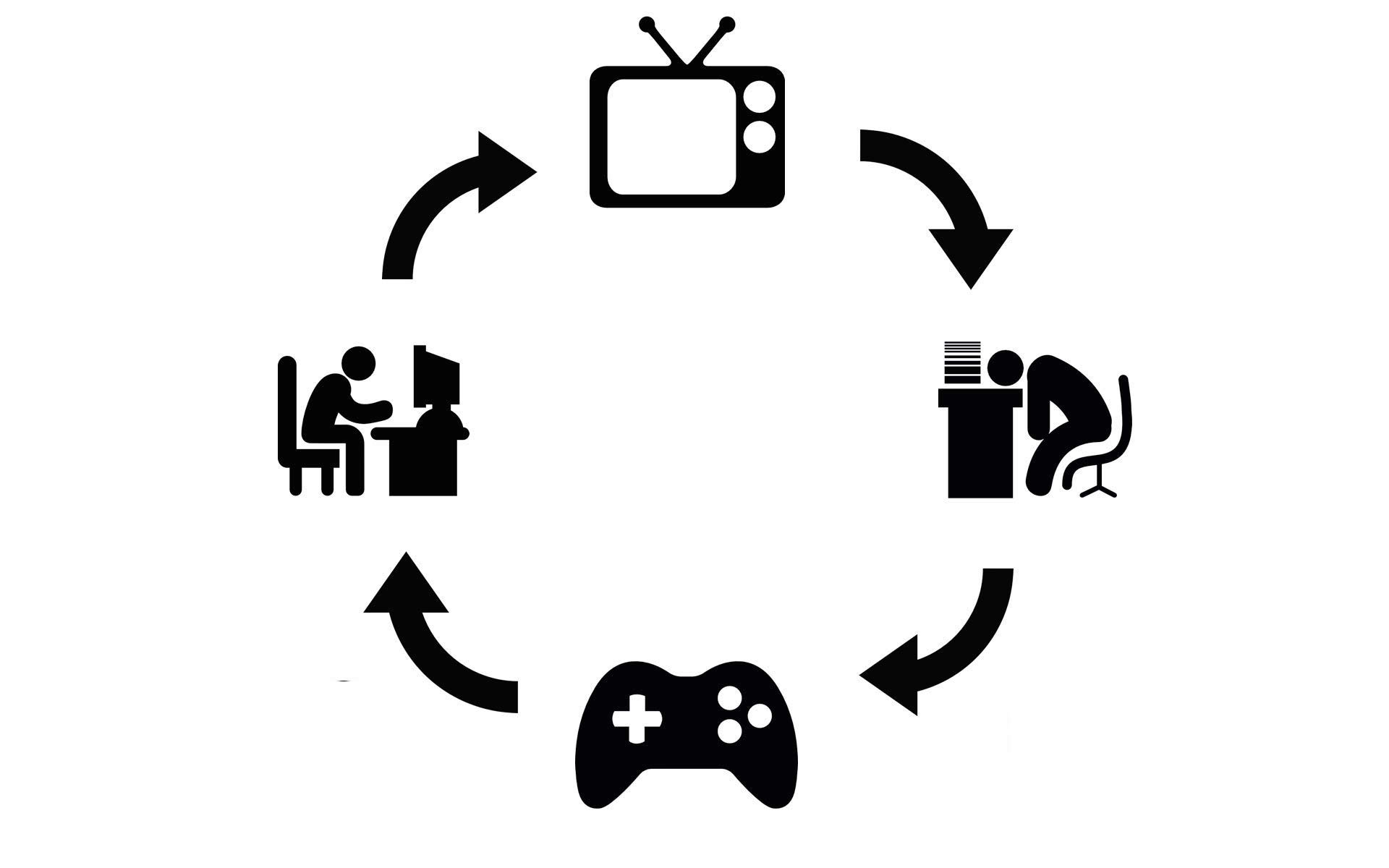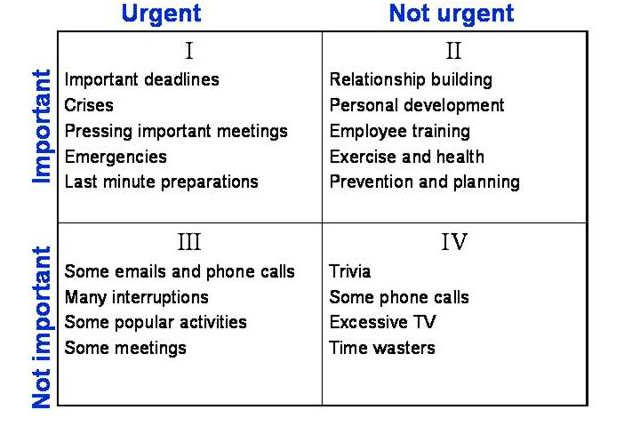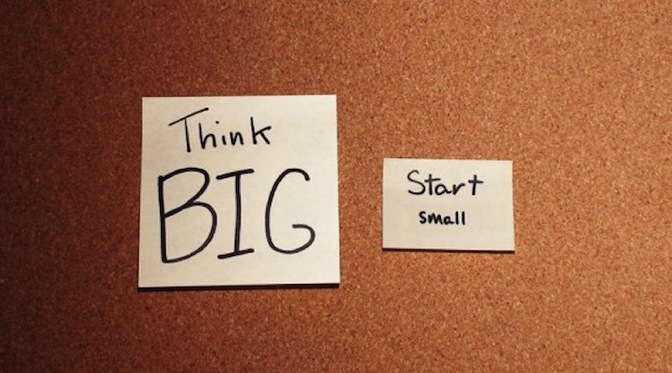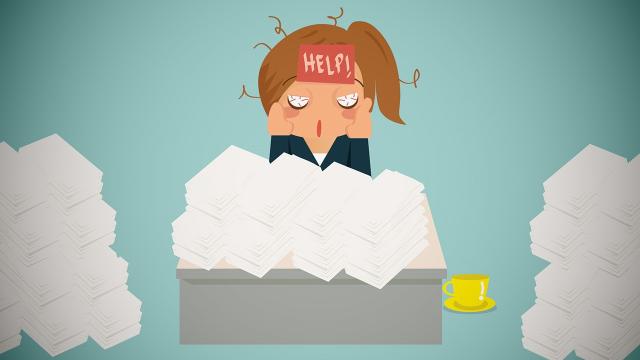We’re all busy, but sometimes we go through periods where the work piles up and it seems like it might never end. You might have so much work that it’s too intimidating to even start. That’s when you need to take a step back, take a deep breath and start prioritising.
ArtsFwd, DriverLayer, Flaticon
This post originally appeared on the Crew blog.
With the waxing and waning of my freelance work, a start-up to manage, and side projects always on the go, this seems to happen to me all too often. So why is it that the busier I get, the less work I seem to do?
There seems to be a tipping point for me when I go from being really busy to so-busy-I’m-paralysed-and-can’t-do-anything. Workload paralysis.
When I have too much on my plate my reaction is usually to just shut down and avoid work altogether (this is when Settlers of Catan gets a heavy workout on my iPad). In the past I’ve been prone to other distractions like TV binging, but each of these amounts to the same unconscious purpose: to occupy my mind so I don’t have to face the reality of my workload.
A Four Step Guide to Overcoming Work Paralysis
Obviously succumbing to workload paralysis is unproductive, but worse than that, it can also put you into a continual cycle of low motivation: You avoid work that needs to be done then get disappointed for wasting half the day playing games or watching TV, which means you don’t have the motivation to get started back on your work and then end up wasting the other half of the day the same way.

To top it off, all this does is add to your workload, increasing the likelihood that you’ll do the exact same thing tomorrow and the day after.
I’ve found myself sucked into this cycle a few times now so I’m at least at the point where I can recognise when it’s happening — that’s where having an action plan becomes crucial.
I highly recommend creating your action plan before you need it as when it comes time to fight against the paralysis you won’t be in the right frame of mind to develop one. If you’re anything like me you’ll be lucky if you can execute the one you’ve got.
These are the four things I’ve found that work well to get me out of this cycle of inaction.
1. Pick Just One Thing and Finish It
You know that little rush you get from crossing something off your to-do list, or sharing a link online to something that’s finally ready for launch?
Nothing gives me quite so much momentum as the feeling of accomplishment that comes from finishing something.
Remembering that feeling when I’m struggling with an overwhelming workload gets me to pick just one thing to focus on each day. I put all the energy I can muster into getting that one thing completed knowing that if I can get there I’ll feel a bit better about my workload overall (since it will reinforce my confidence in my own ability to get things done).
The problem with this type of paralysis is you rarely know where to even begin. For me, I usually start by getting things down on paper or a whiteboard. Seeing everything I have to get done helps me wrap my head around it and work out where to start.
Author Scott Berkun does this too:
“A well written list is the fastest way out of most problematic situations… Writing things down is powerful. When thoughts are written down you can move them around, compare them, combine them, or divide them as your thinking progresses.”
Scott loves to work with lists, since they help him break each task down into smaller chunks until it’s more manageable. I like planning my tasks out on a calendar and working backwards to plan each step that needs to be done along the way. However you work, just get your workload down on paper so you can find a place to get started.
Sometimes I’ll choose something small to start with, just because it’s doable. Maybe it’s an email to a client I’ve been putting off, or some invoices I need to send. Necessary tasks in my workload that are small in themselves are sometimes the best ones to start with. I can use that rolling momentum from each small task to build up to tackling bigger tasks that are really overwhelming me.
2. Prioritise Like Mad
There’s no time I’ve found prioritizing to be more important than when I’m overwhelmed.
Workload paralysis is often the impetus for me to re-examine my priorities and give up on some of the things I felt I had to do. Attending meetups, doing work for free to help out a friend, or meeting with people who want to ‘pick my brain’ are usually the first things to go. I also have to put off extra time I want to spend working on side projects or learning new skills.
This type of prioritizing can often feel like a selfish thing (which just adds to the stress). It’s painful to consciously turn down or put off things you want to do, but it’s necessary to lessen the workload to a point where it’s manageable. Knowing it’s only a temporary measure can help ease that pain.
If you struggle to prioritise, Author Gary Keller suggests asking yourself this simple question:
“What’s the one thing I can do such that by doing it everything else will be easier or unnecessary?”
What’s worked for me in the past is this priority matrix from Stephen Covey’s book, The 7 Habits of Highly Effective People:

Delegation can be really helpful during these periods, too, if you have the resources available. I don’t get much of a chance to delegate work but when I’m really overwhelmed I do pass off some Hello Code work to my co-founder Josh. Customer support, for instance, is something we share, but if one of us has a huge workload in other areas we’ll pass it off temporarily to spread the load more evenly.
You can also delegate chores and family duties, of course. Having someone else handle the housework, cook dinner, or look after the kids can give you more time to handle your workload.
3. Take Small Steps

I said before that I sometimes start with a small task just because I know I can get it completed. That feeling of completion is all I’m looking for initially. It’s the best antidote I know of to the paralysis of having too much to do.
If a small step forward is all you can manage, it’s still better than doing nothing (which will probably lead you backwards as the work piles up higher, anyway).
A short list of small steps I’ve completed is enough to make me feel like I’ve accomplished something at the end of the day. A little momentum is better than none.
If I have writing to get done, sometimes I’ll just start by creating a new Markdown document for each article and saving it. It might have a title and nothing else in it, but it exists now, and I know where to start when I’m ready to make progress on it. I’ve gotten over the hurdle of starting, in a way.
Sometimes the huge workload consists of ongoing projects. Making small steps can help you find a sense of accomplishment that might be hard to come by when you’re working on something long-term. When I’m feeling overwhelmed I try to break down these bigger projects into tasks I can complete within a day and start on those before building up to larger chunks of work.
4. Make Health a Priority
When you’re prioritizing your workload it can be tempting to set aside things like sleep and exercise in favour of getting more done. In my experience, these can’t be treated as optional like social events or working on side projects.
Your health needs to be your top priority, especially when your workload is competing for that #1 spot.
The easiest things for me to overlook when I’m overwhelmed with work are exercise time, healthy eating, and getting enough sleep. Unfortunately, those aren’t things I can easily give up if I want to keep functioning at my best. And when my workload is off the charts it’s even more important that I’m performing well.
When I feel myself being dragged down into the pit of workload paralysis I make sure to set aside dedicated time for exercise and stick to a regular sleep schedule. Since the volume of work can feel like it’s taking away time for cooking (and I don’t want to take a break if I’ve gained back a bit of momentum), I try to cook in batches or buy healthy snacks to make eating well convenient enough that I’ll keep it up.
Next time you find yourself wasting away the hours playing games or watching TV while your workload piles up, remember that it’s not just you. We all feel like that sometimes.
The best thing you can do is focus on taking a small action — just complete one little thing and use that momentum to keep you going until your workload becomes manageable again.
And whatever you do, don’t look down (at the rest of your work). Just focus on what you’re doing right now and get it done.
How to put an end to workload paralysis [Crew]
Belle is a co-founder of Exist, a personal analytics platform to help you track and understand your life. She is a writer at Crew and was previously Buffer’s first Content Crafter and Head of Content at Attendly.

Comments